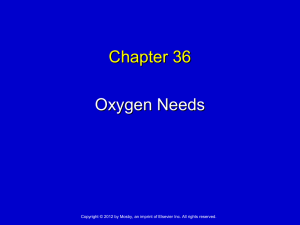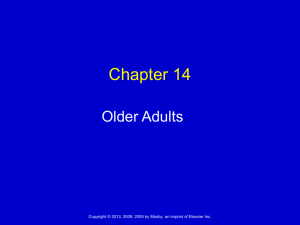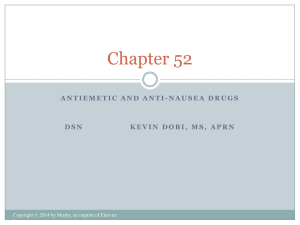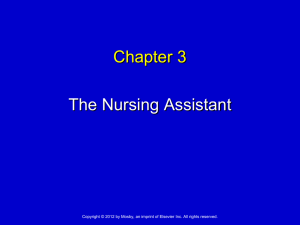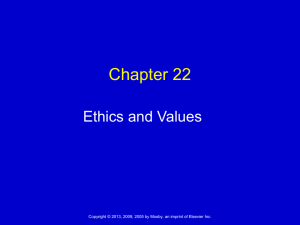Ethnic and Cultural Considerations
advertisement
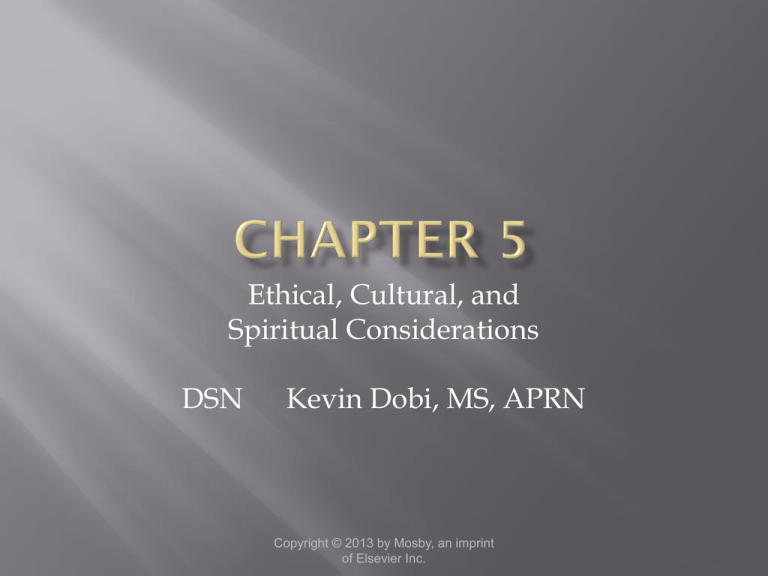
Ethical, Cultural, and Spiritual Considerations DSN Kevin Dobi, MS, APRN Copyright © 2013 by Mosby, an imprint of Elsevier Inc. Culturally competent care is delivered when nurses value health or illness experiences through patient’s eyes. Nurses working together from diverse cultures may practice in different ways. For example: Native Indians emphasize spirituality in their nursing practice: Touching someone has spiritual power. Honor is a characteristic that includes components of appreciation and respect. Copyright © 2013 by Mosby, an imprint of Elsevier Inc. 2 The United States has been called a “melting pot” because many cultures and religions are represented. About 20% of people in the United States speak a language other than English at home. On this continuum are people with varying cultural and spiritual behaviors and beliefs. Belief systems act as lenses through which people filter everything. Diversity can create challenges: When cultures and languages differ. When caring for individuals by not forcing compliance, by working with beliefs and value systems. Copyright © 2013 by Mosby, an imprint of Elsevier Inc. 3 You are not responsible for knowing health beliefs, practices, and values of all groups. You are responsible for asking about beliefs—this is essential for individualized care. There are many definitions of culture, and they all overlap with ethnicity and religion. You improve cultural awareness by asking about unique beliefs, practices, and values. Copyright © 2013 by Mosby, an imprint of Elsevier Inc. 4 Culture = All the socially transmitted behavioral patterns, arts, beliefs, knowledge, values, morals, customs, lifeways, and characteristics that influence a worldview. Ethnicity = Social group within a cultural and social system that shares common cultural and social heritage that includes: Language, history, lifestyle, religion, or all of these. Copyright © 2013 by Mosby, an imprint of Elsevier Inc. 5 Race is genetic in origin and includes physical characteristics: Skin color, bone structure, eye color, and hair color. All humans share a genetic code greater than 99% identical. Individuals from the same racial group are not necessarily from the same culture. Copyright © 2013 by Mosby, an imprint of Elsevier Inc. 6 Religion refers to an organized system of beliefs, rituals, and practices in which an individual participates. Spirituality is a broader concept, which may include: Prayer Meditation Walking in the woods Listening to music Intentional appreciation of beauty Being present in the world with others Spiritual and religious beliefs influence interpersonal behaviors and expectations. Copyright © 2013 by Mosby, an imprint of Elsevier Inc. 7 There are national standards (14) to ensure equitable and effective treatment (Source: USDHSS/OMH). They are organized around three themes: Culturally competent care. Language access services. Organizational supports for cultural competence. Copyright © 2013 by Mosby, an imprint of Elsevier Inc. 8 Standard 1 directly affects nurses. Healthcare organizations should ensure that patients receive: Effective, understandable, and respectful care. Care provided in a manner compatible with cultural health beliefs and practices and preferred language. Furthermore, The Joint Commission requires that a spiritual history be taken from every patient admitted to hospital. Copyright © 2013 by Mosby, an imprint of Elsevier Inc. 9 Culturally competent nurses respect patient as unique person by assessing the individual’s: Beliefs Values Preferences Needs Be aware of your own biases. Know questions to ask to learn about unique cultures of your patients. Copyright © 2013 by Mosby, an imprint of Elsevier Inc. 10 Knowledge: Gain information about cultural differences and values. Consideration: Use knowledge of languages, practices, and customs when providing care. Understanding: Thoughtful consideration of the importance of another’s values and experiences. Respect: Show appreciation and regard for cultural differences. Tailoring: Adapting interactions based on cultural practices and beliefs Copyright © 2013 by Mosby, an imprint of Elsevier Inc. 11 Recognize the uniqueness of each individual. Cultural heritage equals “roots.” This helps explain activities and beliefs. Differences exist within cultures and groups. Beliefs and attitudes in the United States have been shaped by stereotypical images and misinformation. Each patient deserves personalized assessment. Copyright © 2013 by Mosby, an imprint of Elsevier Inc. 12 Direct assessment of patient’s health beliefs and practices that may reflect his or her cultural heritage. Focused interview to provide information about patient’s personal beliefs, values, and attitudes. Observe behaviors during interview. Ask one question at a time, allowing ample time for response. Copyright © 2013 by Mosby, an imprint of Elsevier Inc. 13 Introductory questions: What cultural practices are important to you? Primary language and method of communication: What language is spoken in your home? Personal beliefs about health and illness: What are some of the practices you believe will improve your health? Do you use alternative healing methods? Beliefs about a current health problem: What are the most important results you hope to receive from this treatment? Copyright © 2013 by Mosby, an imprint of Elsevier Inc. 14 Religious or spiritual influences: Do you have any spiritual needs or concerns related to your health? Roles in the family: Who makes decisions in your family? Special dietary practices: Are there any special types of food that are forbidden by your culture? Note patient’s surroundings: Are there any religious symbols? Copyright © 2013 by Mosby, an imprint of Elsevier Inc. 15 Be sensitive. Ask questions. Gather specific information. Do not stereotype. Do not assume care for one individual of a culture is appropriate for another individual of same or similar culture. Regardless of culture or race, each patient is unique— take time to know each patient. Copyright © 2013 by Mosby, an imprint of Elsevier Inc. 16 Staff development educators are responsible for assisting staff nurses in being adequately prepared to perform their duties as they care for patients from many different cultures and backgrounds. As the educator works with a new nurse from the Philippines, the educator will include: Training on American food choices. Assistance with competency in skin lesions on dark skin. C. Practice in assessing patients’ personal beliefs and practices. D. Information on immigration and privacy laws. A. B. Copyright © 2013 by Mosby, an imprint of Elsevier Inc. 17 Copyright © 2013 by Mosby, an imprint of Elsevier Inc. 18 Copyright © 2013 by Mosby, an imprint of Elsevier Inc. 19


